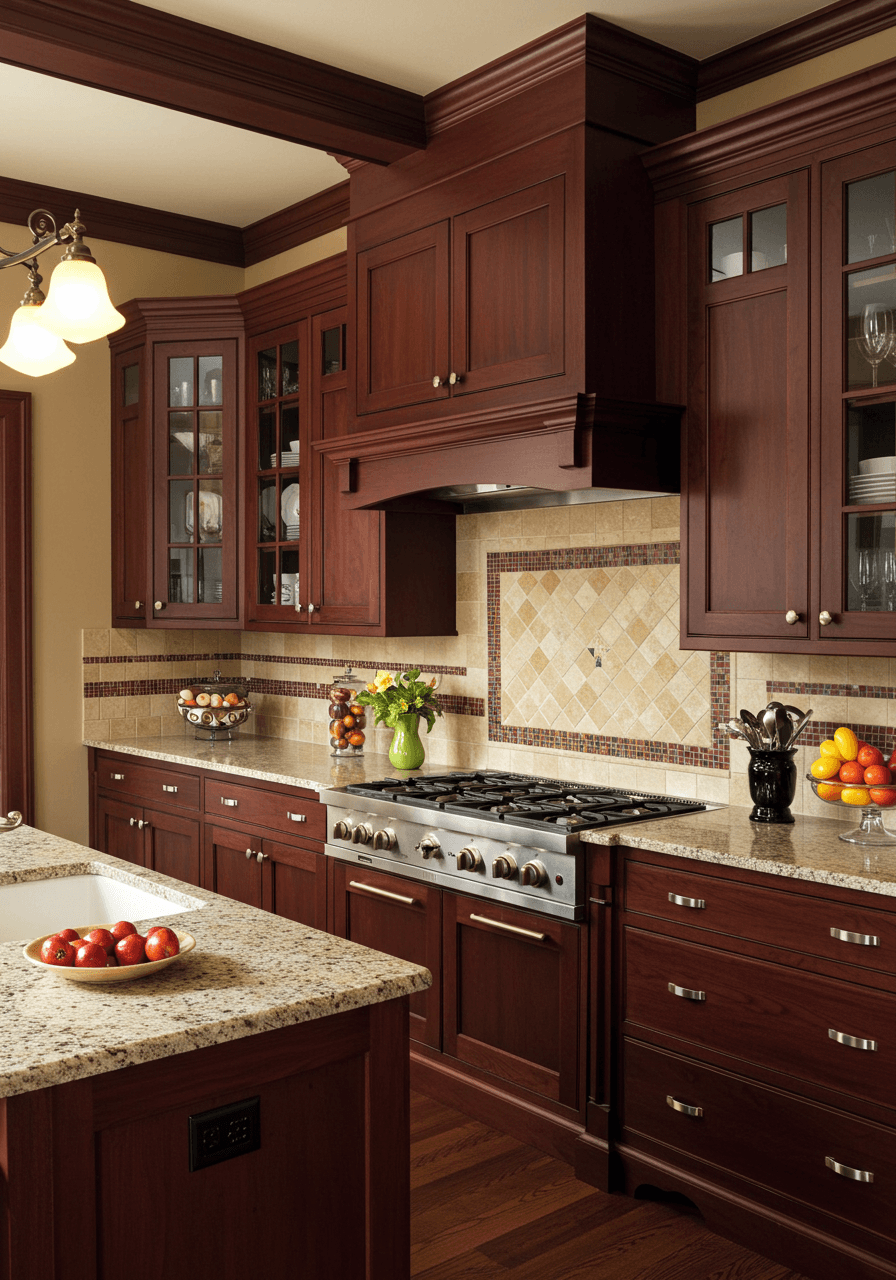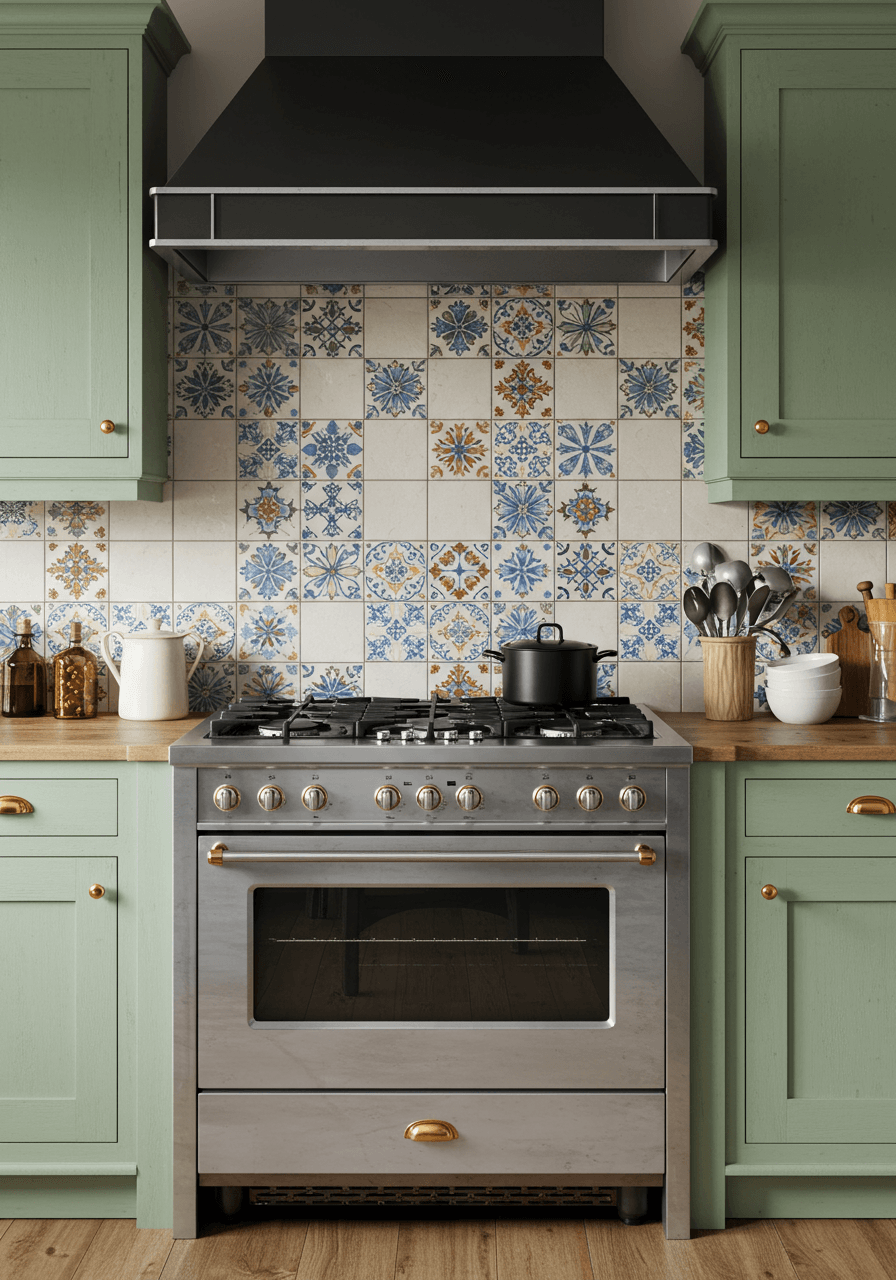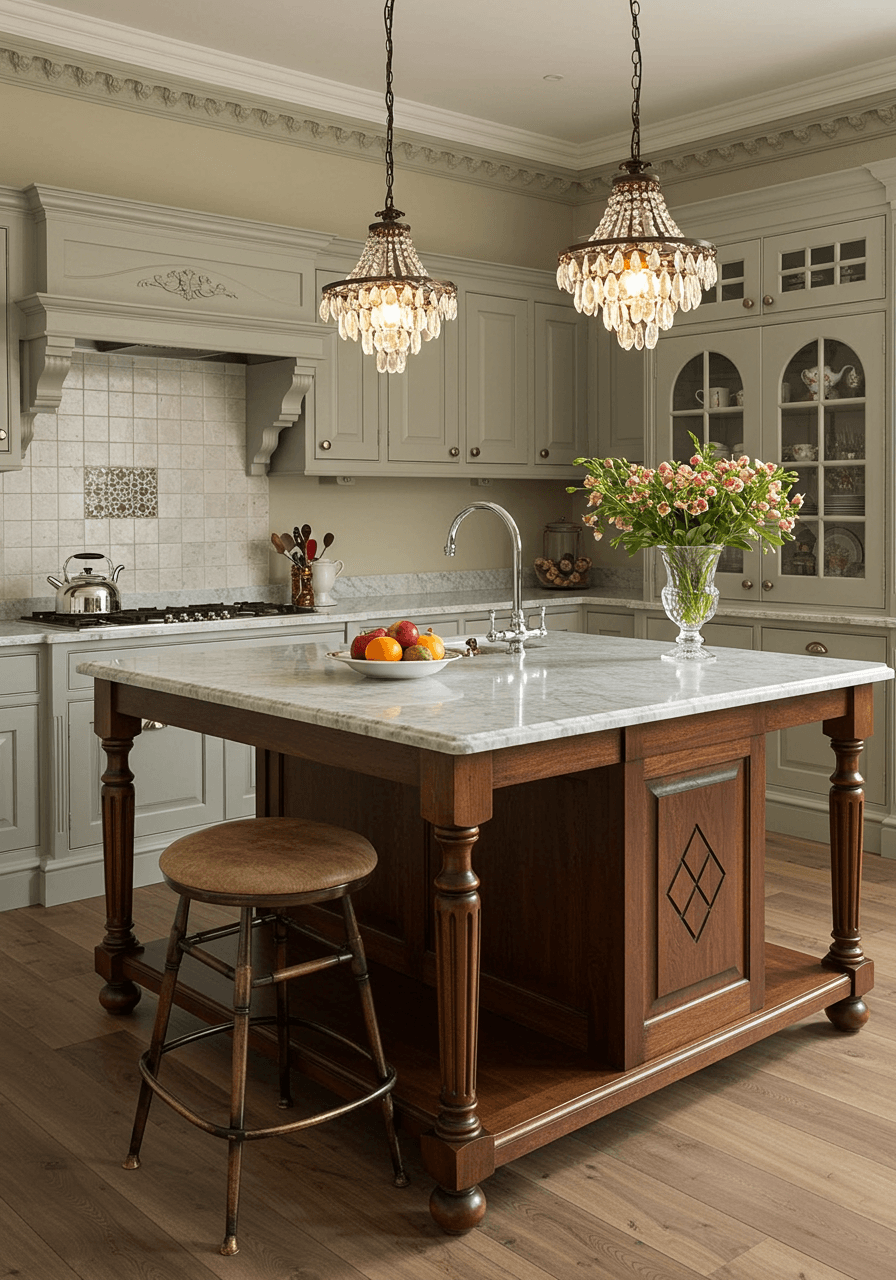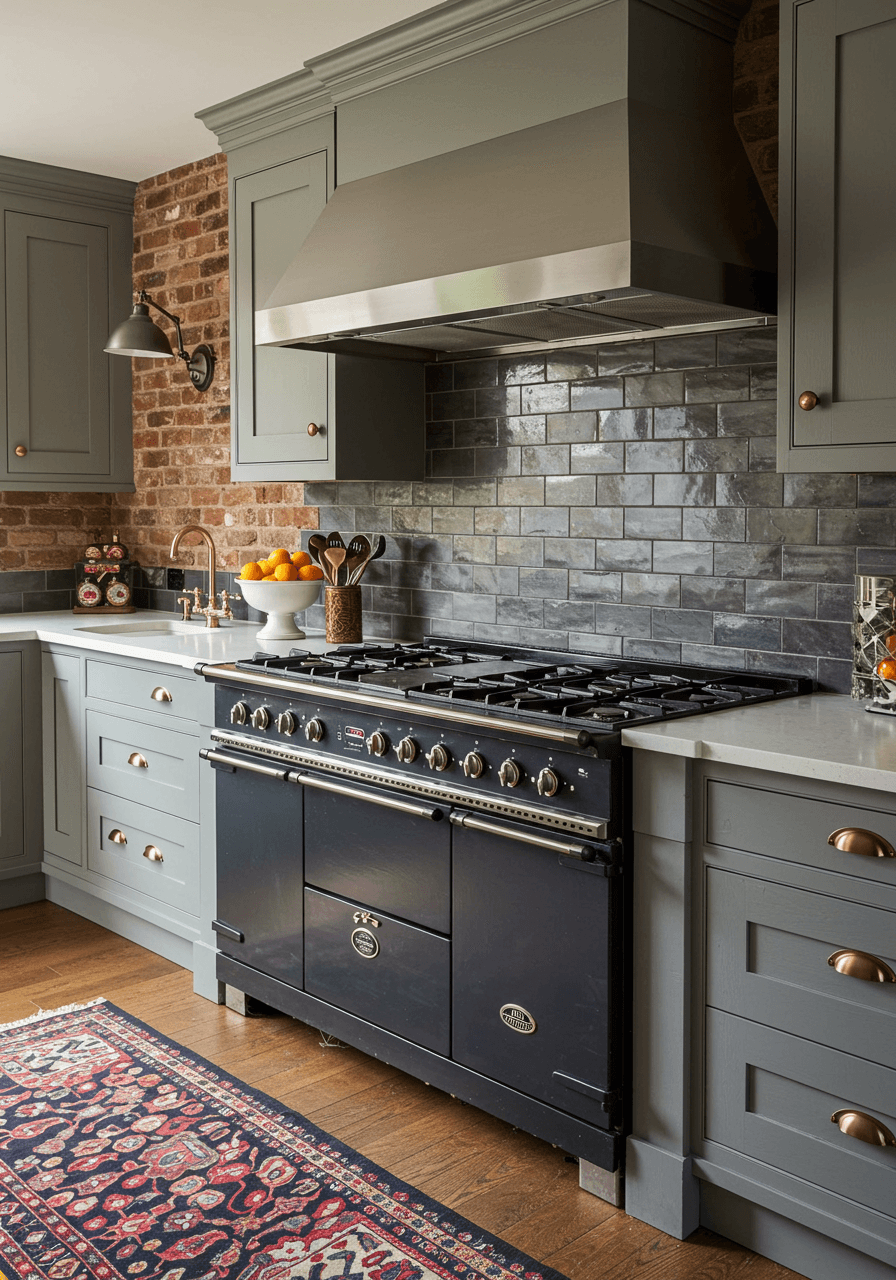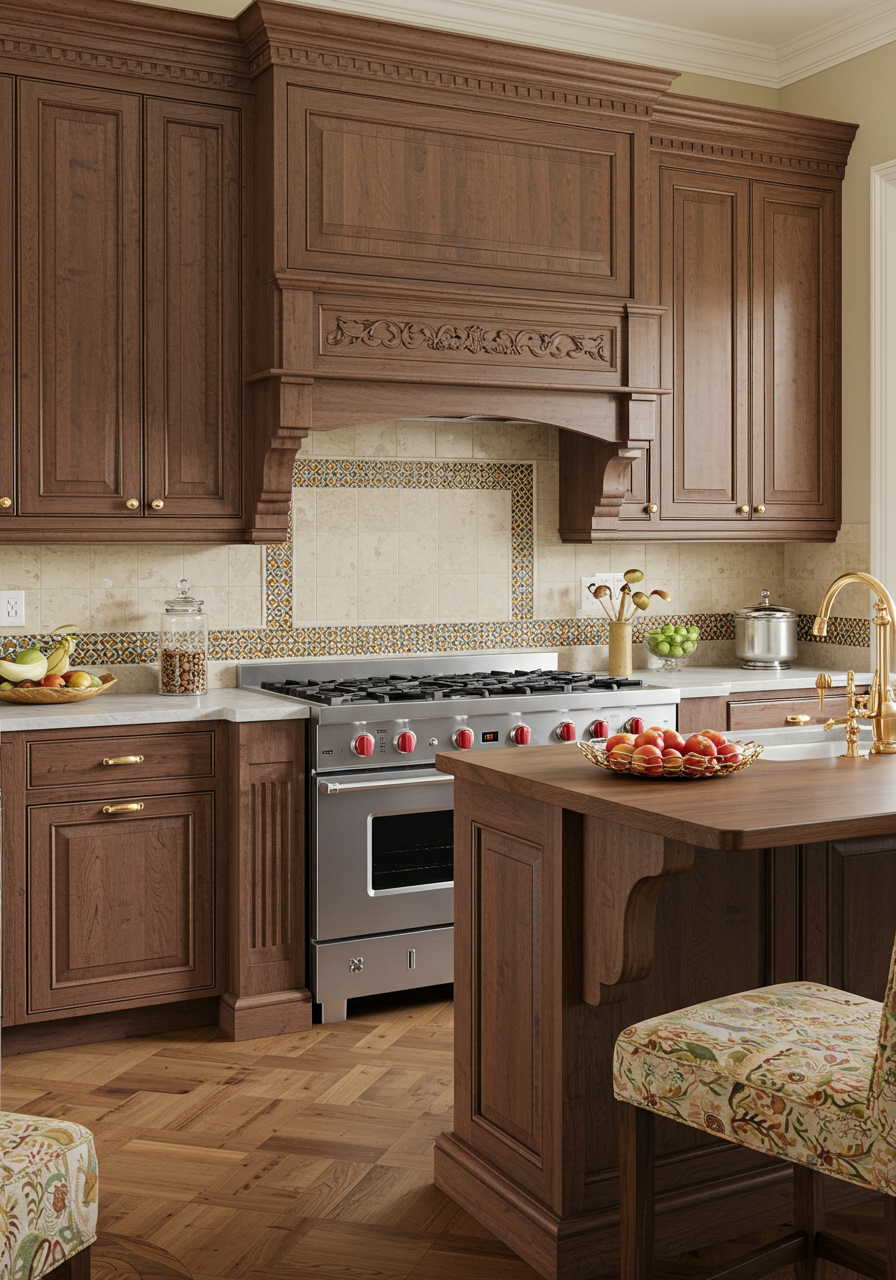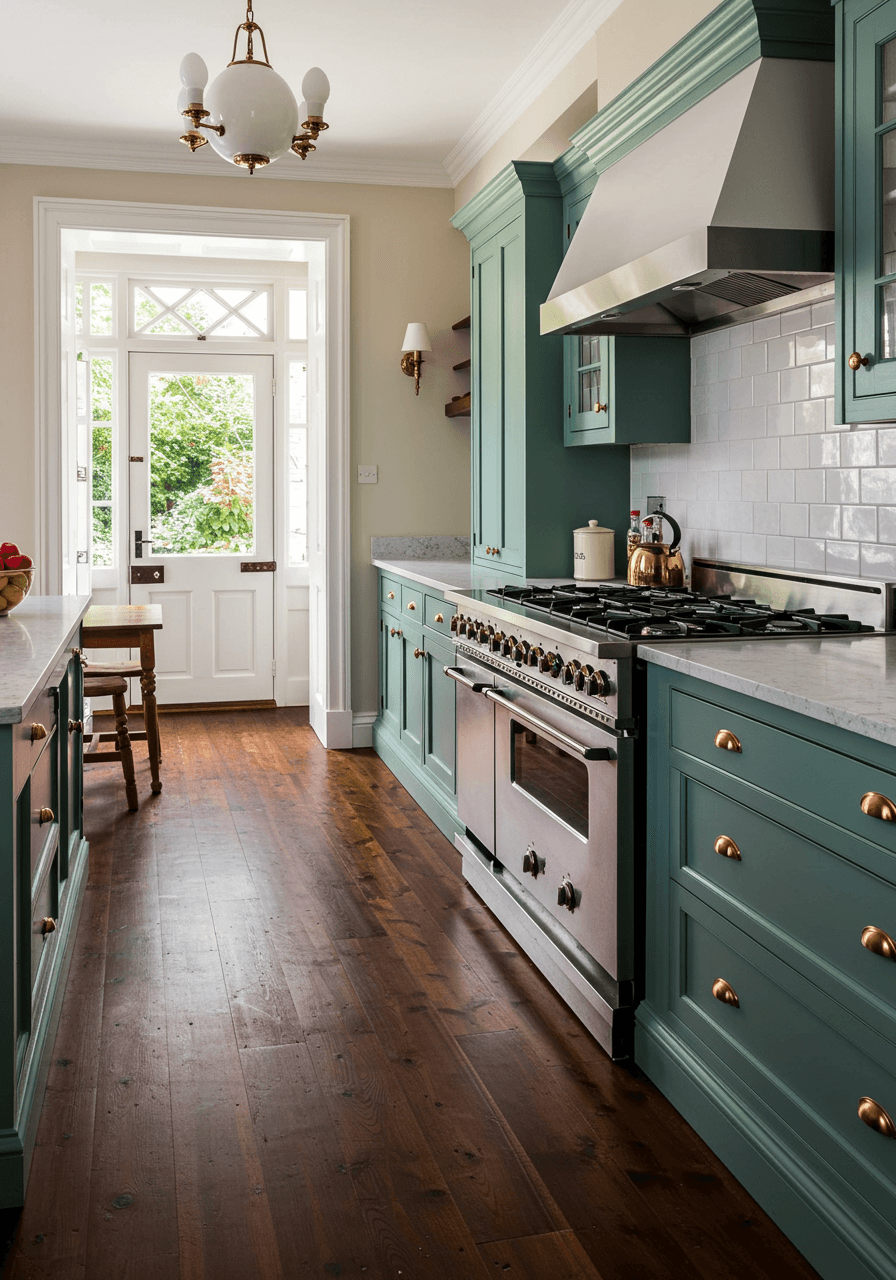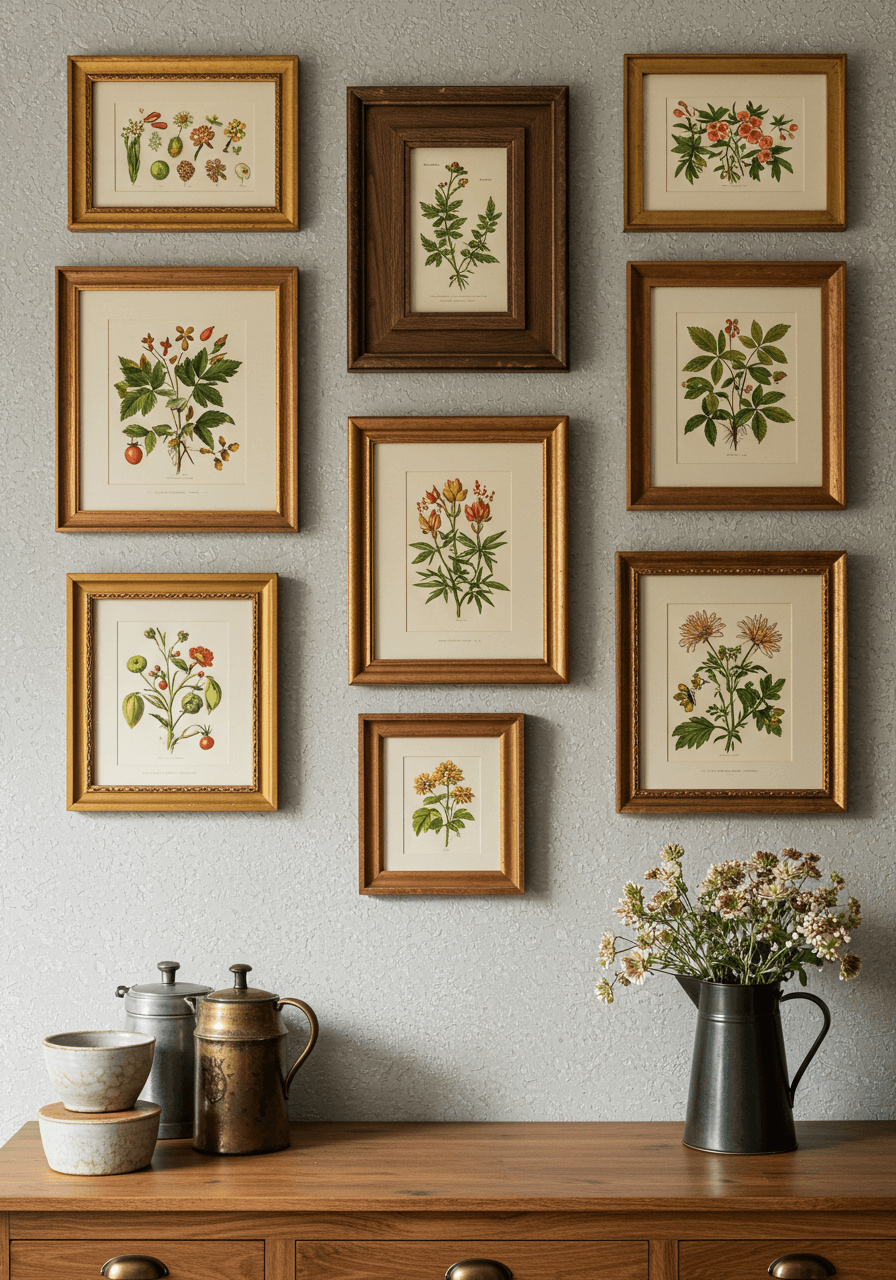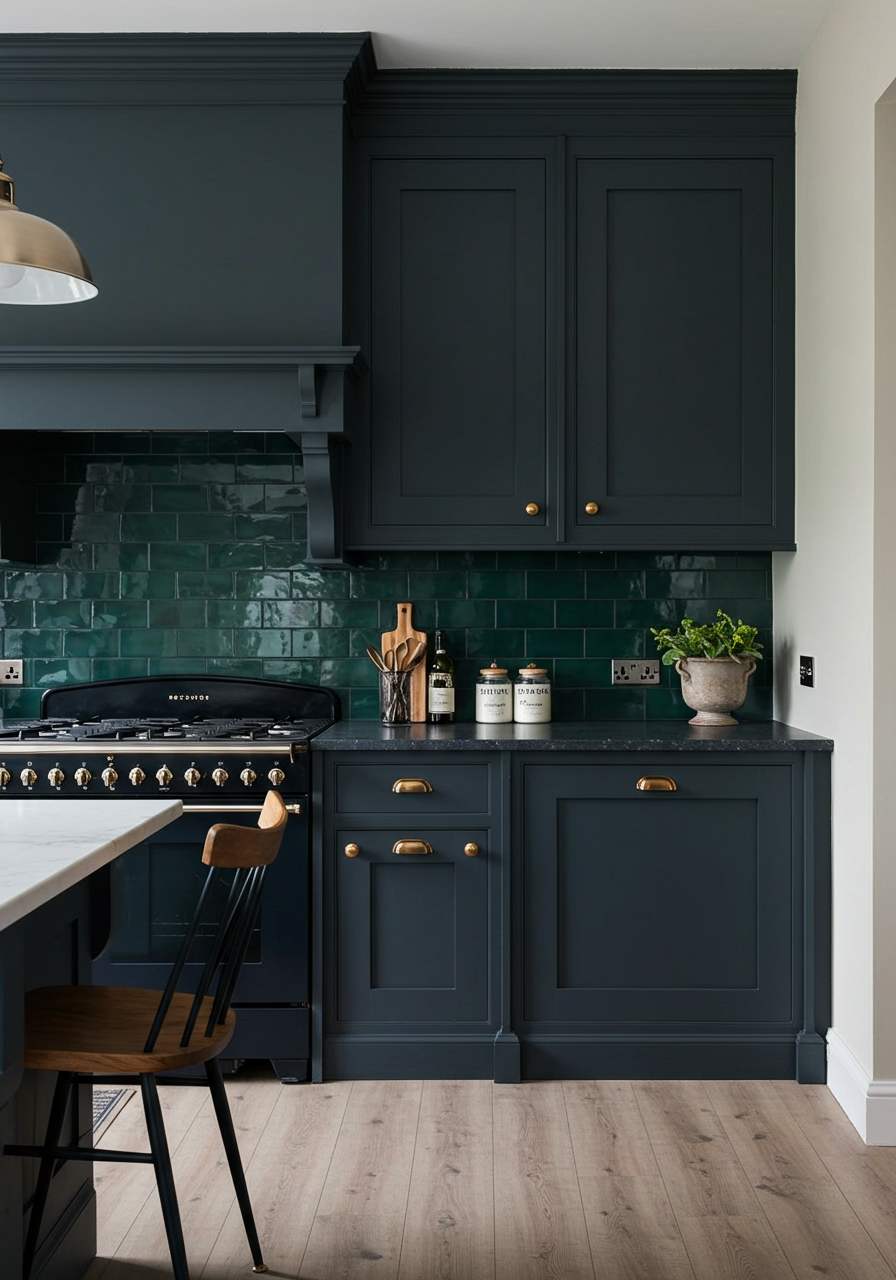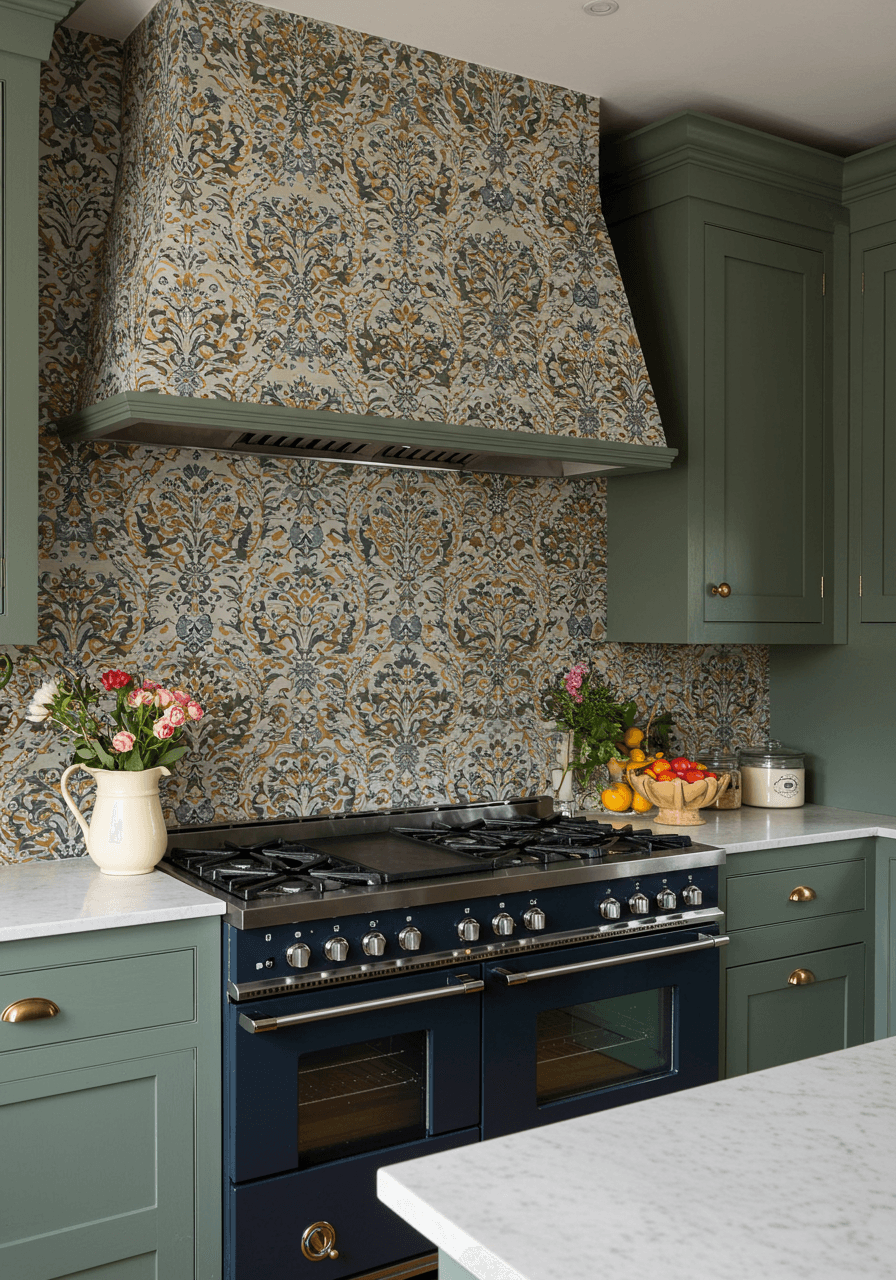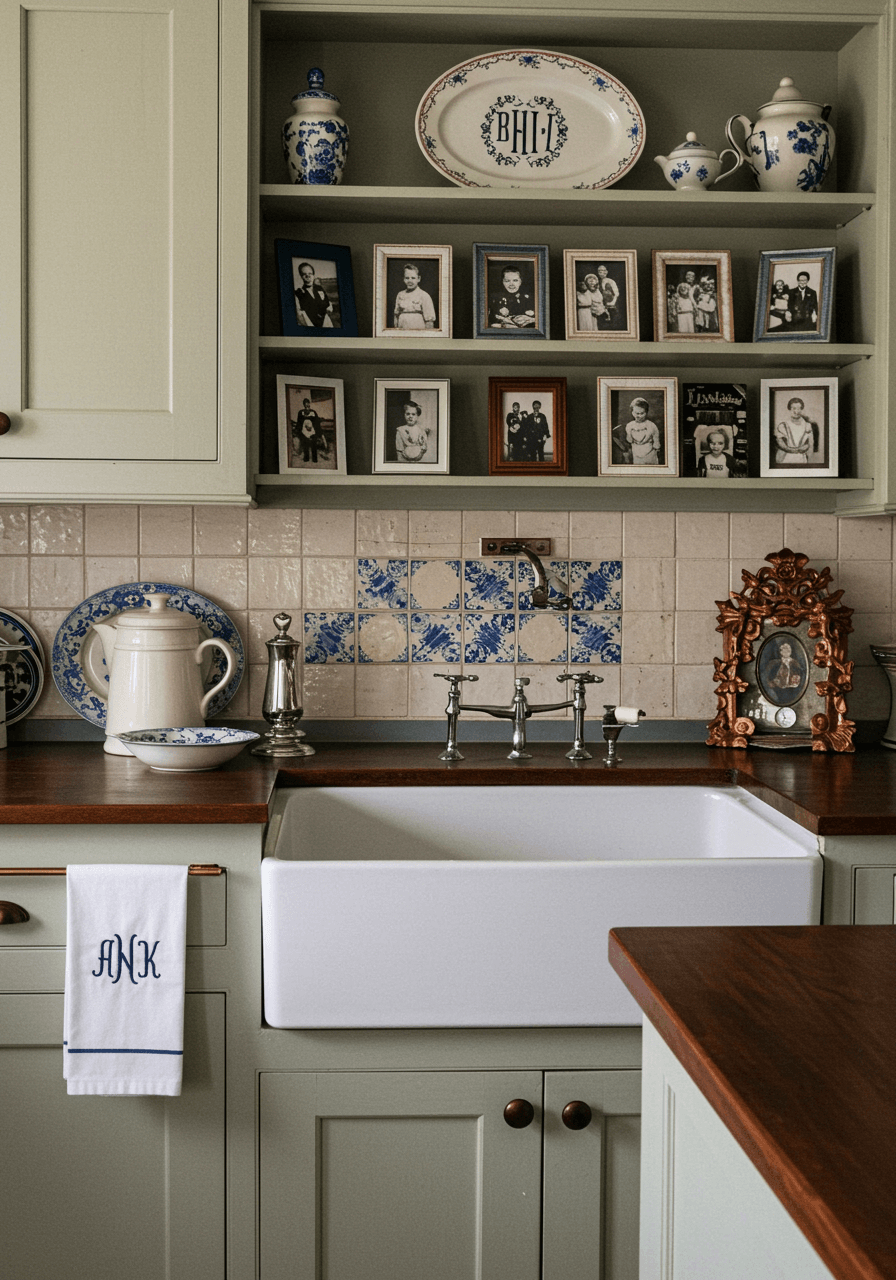When it comes to interior design, the Victorian era is a treasure trove of inspiration. Known for its opulence, intricate details, and timeless charm, the Victorian style has left an indelible mark on home decor. And when it comes to kitchens, this era offers endless possibilities for creating a space that’s both functional and breathtaking. Whether you’re a fan of rich wood tones, ornate details, or classic elegance, these 21 stunning Victorian kitchen designs will spark your creativity and help you transform your cooking area into a showstopper.
What Makes Victorian Kitchens So Special?
Before we dive into the designs, let’s take a moment to understand what makes Victorian kitchens so unique. The Victorian era (1837–1901) was marked by innovation, prosperity, and a love for beauty. This period saw the rise of industrialization, which brought new materials and techniques into home design. As a result, Victorian kitchens often feature:
- Rich Materials: Mahogany, oak, and marble were popular choices during this time. These materials add warmth and sophistication to any space.
- Ornate Details: From carved moldings to decorative tiles, Victorian kitchens are all about intricate embellishments.
- Functionality Meets Beauty: While aesthetics were important, practicality wasn’t ignored. Victorian kitchens were designed to be both beautiful and efficient.
Now, let’s explore some incredible Victorian kitchen designs that blend tradition with modern living.
1. A Warm and Inviting Mahogany Haven
Imagine stepping into a kitchen where deep mahogany cabinets dominate the scene. This rich wood tone creates an instant sense of warmth and luxury. To enhance the Victorian vibe, consider adding crown molding along the ceiling and incorporating glass-paneled cabinet doors. For countertops, natural stone like granite or marble works beautifully, offering durability and a touch of elegance. Don’t forget to include a statement piece, such as a clawfoot sink or a vintage-inspired range hood, to tie the look together.
To make this design feel more contemporary, balance the dark cabinetry with lighter elements, such as white subway tiles or soft neutral walls. You can also incorporate modern appliances hidden behind cabinet doors to maintain the cohesive Victorian aesthetic while ensuring functionality.
2. Embracing the Glamour of Gold Accents
Gold accents are synonymous with Victorian design, and they’re perfect for adding a touch of glamour to your kitchen. Picture brass hardware pulling open shaker-style cabinets, gold-framed mirrors hanging above a marble-topped island, or even a gilded chandelier casting warm light over the room. These metallic touches elevate the space without overwhelming it.
For those who want to go all out, consider installing a custom backsplash made from gold-patterned tiles. It might sound bold, but paired with creamy whites or soft grays, it becomes a stunning focal point. Remember, the key is to use gold sparingly yet strategically—let it serve as a highlight rather than the main event.
3. The Magic of Decorative Tiles
One hallmark of Victorian kitchens is their use of decorative tiles. These aren’t just functional; they’re works of art in themselves. Imagine a checkerboard pattern in black and white, or perhaps colorful floral motifs adorning the backsplash. Tile designs not only add visual interest but also protect surfaces from spills and splatters.
If you’re working with a smaller kitchen, don’t shy away from using large-format tiles. They create the illusion of space and keep the area feeling airy. For larger kitchens, mix and match patterns to add depth and character. Just ensure the overall palette remains cohesive, tying everything together harmoniously.
4. Bringing Nature Indoors with Greenery
Victorian homes celebrated nature through lush gardens and indoor plants. Why not bring this philosophy into your kitchen? Incorporating greenery doesn’t mean filling the room with potted plants (though that’s always a great idea). Instead, think about integrating botanical themes into your design.
Consider wallpaper featuring intricate leaf patterns or hand-painted murals of flowers climbing up the walls. If you prefer something simpler, opt for ceramic tiles with delicate vine motifs. Adding fresh herbs in small pots on your windowsill or countertop provides both beauty and utility—you’ll have fragrant ingredients at your fingertips!
5. Creating a Statement Island
A kitchen island is more than just a prep station; it’s a centerpiece. In a Victorian kitchen, your island should reflect the grandeur of the era. Choose a material like marble or quartz for the top, then frame it with intricately carved wooden legs or pedestal supports. Add storage below with cabinets featuring etched glass panels or detailed carvings.
For extra flair, install pendant lights above the island. Opt for fixtures with crystal droplets or intricate metalwork to channel the Victorian spirit. Finally, accessorize with a few elegant items, like a vintage fruit bowl or decorative vase, to complete the look.
6. Mixing Old and New: Industrial Meets Victorian
Sometimes, the best designs come from blending contrasting styles. Pairing Victorian elements with industrial features creates a dynamic, eclectic space. Picture exposed brick walls paired with glossy lacquered cabinets or a cast-iron stove set against sleek stainless steel appliances.
This approach allows you to enjoy the best of both worlds—the timeless charm of Victorian design and the practicality of modern technology. When combining these styles, focus on maintaining balance. Let one style dominate while letting the other complement it subtly.
7. Adding Personal Touches with Custom Cabinetry
Custom cabinetry is where you can truly express your personality. Instead of settling for off-the-shelf options, work with a designer to create pieces tailored to your vision. Perhaps you’d like cabinets with arched tops or ones adorned with ornamental carvings. Maybe you envision secret compartments or built-in wine racks
Don’t overlook the importance of hardware. Knobs and pulls come in countless shapes, sizes, and finishes. Choose ones that align with your Victorian theme, whether that’s antique brass, polished nickel, or matte black.
8. Lighting That Sets the Mood
Lighting plays a crucial role in setting the ambiance of any room, especially a Victorian kitchen. Chandeliers are an obvious choice, but there are many other ways to incorporate lighting. Wall sconces, under-cabinet strips, and recessed ceiling lights can all contribute to the overall effect.
Look for fixtures with intricate detailing, such as filigree patterns or crystal embellishments. Adjustable lighting is also essential—it lets you switch between bright task lighting for cooking and softer ambient lighting for entertaining.
9. Flooring That Tells a Story
Your flooring sets the foundation for your entire kitchen design. Hardwood floors stained in deep hues evoke the richness of Victorian interiors, while patterned tiles introduce playful energy. Another option is encaustic cement tiles, which combine durability with artistic flair.
If you’re concerned about maintenance, consider engineered wood or laminate flooring that mimics the appearance of authentic hardwood. Whatever material you choose, ensure it complements the rest of your design scheme.
10. Creating Cozy Seating Areas
No Victorian kitchen is complete without a cozy seating area. Imagine a banquette lined with plush velvet cushions or a round table surrounded by intricately carved chairs. This spot becomes perfect for casual meals, morning coffee, or late-night chats.
When designing your seating area, pay attention to scale. Ensure the furniture fits comfortably within the space without overcrowding it. You might also want to add a rug beneath the seating to define the area visually.11. A Gallery Wall of Culinary Art.
11. A Gallery Wall of Culinary Art
Art doesn’t have to be confined to living rooms or bedrooms—it can shine in your kitchen too. Create a gallery wall featuring vintage prints, botanical illustrations, or even family heirlooms. Frame them in ornate gold or wooden frames to enhance the Victorian aesthetic. This not only adds personality but also serves as a conversation starter for guests.
If you’re short on wall space, consider leaning framed pieces against the backsplash or placing them on open shelving. The result is a curated look that feels both intentional and inviting.
12. Open Shelving with a Twist
Open shelving has become increasingly popular, and for good reason—it showcases your favorite items while keeping clutter at bay. In a Victorian kitchen, however, open shelves should reflect the era’s grandeur. Opt for shelves with decorative brackets, carved edges, or intricate moldings.
Display your finest dishware, teapots, or collectibles on these shelves. To prevent the space from looking too crowded, group items by color or theme, leaving some areas intentionally empty for balance.
13. A Statement Range Hood
The range hood is often overlooked, but it can become a stunning focal point in a Victorian kitchen. Look for options with elaborate detailing, such as filigree patterns, copper finishes, or hand-painted accents. If you’re feeling ambitious, consider commissioning a custom piece that matches your cabinetry style.
Ensure the hood is both beautiful and functional—after all, it needs to handle cooking odors and steam effectively. Pair it with matching vent covers for a cohesive appearance.
14. Incorporating Arched Doorways
Arches are a hallmark of Victorian architecture and can transform your kitchen layout. Whether you’re dividing the dining area from the prep zone or creating a pass-through to another room, arched doorways add elegance and flow.
To incorporate this feature, work with a contractor to modify existing walls or install pre-made arch kits. Paint the arches in a contrasting color to make them stand out, or keep them neutral for a subtler effect.
15. Embracing Dark Colors
While light and bright kitchens are trendy, dark colors offer depth and drama. Consider painting your cabinetry in shades like charcoal gray, navy blue, or emerald green. These hues evoke the sophistication of Victorian design while providing a modern twist.
Balance darker tones with lighter elements, such as white countertops, pale walls, or metallic accents. This contrast prevents the space from feeling overwhelming and ensures it remains welcoming.
16. Adding a Butler’s Pantry
A butler’s pantry was a staple in Victorian homes, serving as a buffer between the main kitchen and formal dining room. Today, this concept can be adapted into a small prep area, storage nook, or beverage station.
Equip your butler’s pantry with cabinets, drawers, and perhaps a mini sink. Install glass-front doors for an elegant touch, and use the space to store serving dishes, wine glasses, or coffee equipment. It’s both practical and stylish—a win-win!
17. Mixing Textures for Depth
Texture plays a vital role in interior design, and Victorian kitchens benefit greatly from layering different materials. Combine smooth marble countertops with rough-hewn stone backsplashes, glossy lacquered cabinets with weathered wood floors, or velvet upholstery with woven rugs.
This juxtaposition creates visual interest and keeps the space dynamic. Just ensure each texture aligns with the overall Victorian theme to maintain harmony.
18. Installing Crown Molding
Crown molding is one of the easiest ways to elevate any room, including your kitchen. Choose profiles with intricate details, such as scrolls, leaves, or beadwork, to capture the essence of Victorian design.
Paint the molding in a slightly lighter shade than your walls to make it pop, or match it to your cabinetry for a seamless look. Don’t forget to extend the molding around windows, doors, and other architectural features for added impact.
19. Creating a Focal Point with Wallpaper
Wallpaper is making a comeback, and there’s no better place to showcase it than in your kitchen. Select patterns inspired by Victorian aesthetics, such as damask motifs, floral arrangements, or geometric shapes.
Use wallpaper sparingly—perhaps on an accent wall behind the stove or within a niche—to avoid overwhelming the space. For easier maintenance, opt for peel-and-stick versions or vinyl wallpapers designed for high-moisture areas.
20. Adding Personalized Touches
Your kitchen should reflect your unique taste and lifestyle. Incorporate personalized elements, such as monogrammed towels, custom-designed tiles, or family photographs displayed in vintage frames. These small details turn your kitchen into a truly one-of-a-kind space.
You might also include meaningful antiques, like an heirloom clock or a cherished platter, to infuse the room with history and sentimentality.
21. Balancing Tradition with Modernity
Finally, remember that Victorian design isn’t about rigid adherence to rules—it’s about blending tradition with innovation. Feel free to mix classic elements with contemporary touches, whether that’s through smart technology, minimalist appliances, or bold color choices.
The key is to honor the spirit of Victorian design while tailoring it to fit your needs and preferences. After all, your kitchen should be as unique as you are.
Conclusion: Bring the Past Into the Present
Designing a Victorian kitchen isn’t about replicating history—it’s about embracing its essence and making it your own. By combining rich materials, ornate details, and thoughtful functionality, you can create a space that feels both luxurious and inviting. Whether you’re starting from scratch or updating an existing kitchen, these ideas provide a solid foundation for achieving your dream Victorian-inspired haven.
So why wait? Start exploring your options today and let your imagination run wild. After all, your kitchen deserves to be as stunning as the rest of your home—and these 21 designs prove it’s possible!



